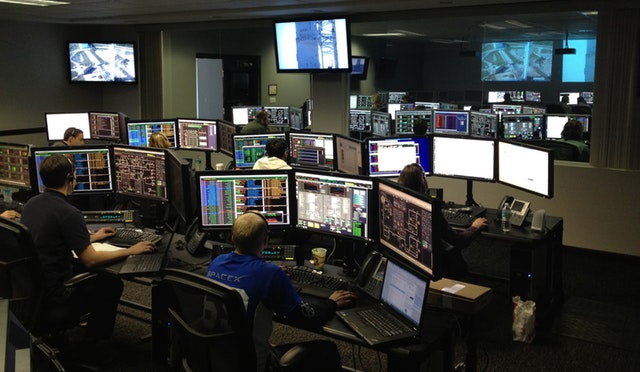Author: Vinaksh
With stagnating consumption and restrictions on individual and merchandise flow, the footwear and apparel industry is quickly overhauling its strategy for the “new normal”. COVID-19 is forcing the industry to be more focused, sustainable and efficient in its processes. In doing so, it is also forcing the industry to become more digital savvy. The challenge before industry leaders is to be more “connected” across the value chain, while being “physically disconnected”. How will the industry operations look a few months from now as it is re-shaped by the crisis?
If anything is certain, it is this: the industry will adopt additional digital assets to drive product development, adopt technology solutions that connect processes and move business towards more sustainable and resilient processes.
The PLM solutions that the footwear and apparel industry uses were not designed for an eventuality like COVID-19. As an example, there is over reliance on physical samples, which right now are difficult to make and ship. This has presented a major challenge in the development process. Add to that the problem of getting multiple iterations through the sampling process. For an industry where “physical review” and “in-use” evaluation of the performance characteristics of materials are of immense importance, this can be very problematic. The challenge is to ensure that the stakeholders are connected and are able to meaningfully perform their activities (in case of samples) in a collaborative environment, while being able to work around the lockdown and lack of co-location imposed by COVID-19.
Brooks Running, the brand behind high-performance running shoes, clothing, and accessories headquartered in Seattle, USA, is finding ways to address the challenges. “We are now dipping our toes in 3D design and modelling,” says Cheryl Buck, Senior Manager, IT Business Systems, Brooks Running, who is responsible for the FlexPLM implementation in her organization. “We are examining visual ways to create new products and ensuring extremely tight communication (between functions).”
The goal is to improve collaboration, build end-to-end visibility coupled with accurate product development information (schedules, plans, resources, designs, testing, approvals, etc.) that reduces re-work and delivers faster decisions. The key to enabling this is to make real-time data and intuitive platforms with a modern UI available to all stakeholders. The result is improved productivity and efficiency, despite the barriers placed by COVID-19 for business as we had known earlier. Smart manufacturers like Brooks Running are going one step further. They are using role-based applications to extend the ability of their PLM (see figure below). These apps cater to the needs of individual users.
(App segmentation is illustrative, two or more segments can be combined to create apps to support business needs)
Brooks Running has found that the app ecosystem meets several process expectations. “It is difficult to configure PLM to individual needs,” observes Buck, “So providing special functional apps is a great way to address the gaps.” A readily available API framework allows Brooks Running to exchange information between systems and applications. The framework is flexible to support scale and is also cloud compatible.
For Brooks Running, COVID-19 has become a trigger for being creative and smoothening its processes. The organization has installed high resolution cameras to better view products and materials being shared in video conferences, and is incorporating 3D modelling into its processes. This makes it easier for stakeholders to assess designs as they can see more detail (testing has been moved to locations that are less affected by COVID-19 and when that is impossible, Brooks Running uses virtual fitting applications). The end result is that teams can easily share product development, acquire feedback and move ahead. The system keeps information on plans and schedules updated, shares status and decisions, and keeps things transparent.
Brooks Running finds that a bespoke Style Tracker application designed for the organization is proving to be extremely helpful in that it provides a reference point for styles in their development path within the season, tracks due dates for stakeholders, signals what needs to be done to get to the next check point and provides a simple way for leadership to track progress. “The style tracking app is a big win for us,” says Buck.
The experience of Brooks Running provides footwear and apparel retailers with a new perspective on the possibility to improve PLM outcomes and ROI:
- Provide user group/process specific and UI rich tools
- Enable actionable insights
- Leverage single or multiple source of data
- Enable option for access across mobile platforms
- Make future upgrades easy and economical
- Provide an easy way for incorporating latest technology platforms like 3D, Artificial Intelligence, RPA, Augmented Reality/Virtual Reality
FlexPLM is a market leader in the retail PLM space and combining it with ITC Infotech’s layer of apps provides FlexPLM partners with an easy, efficient and scalable mechanism to align the solution to the needs and expectations of the individual business in a way that has minimum impact on future upgrades, which is a significant plus. In addition, the app framework makes alignment across different configuration easy, which is an added advantage. Organizations that don’t want to modify their Flex implementation will find immense appeal in the app ecosystem to extend the capabilities of their PLM—especially as COVID-19 makes it necessary to bring innovation and ingenuity to the forefront.
Authors:
Cheryl Buck
Senior Manager, IT Business Systems, Brooks Running
Pinaki Banerjee
Program Director, ITC Infotech
